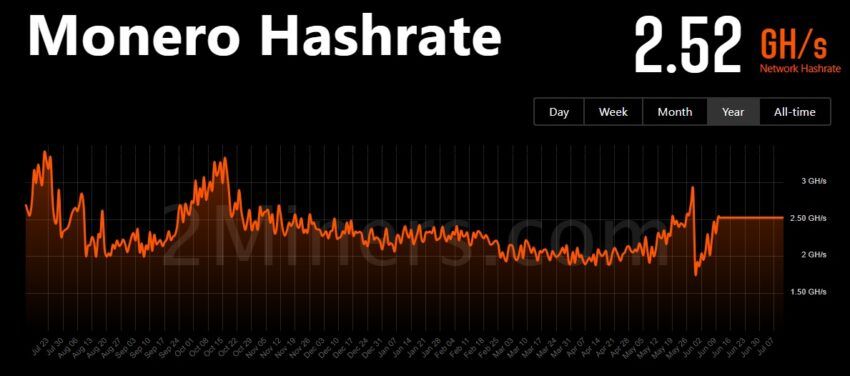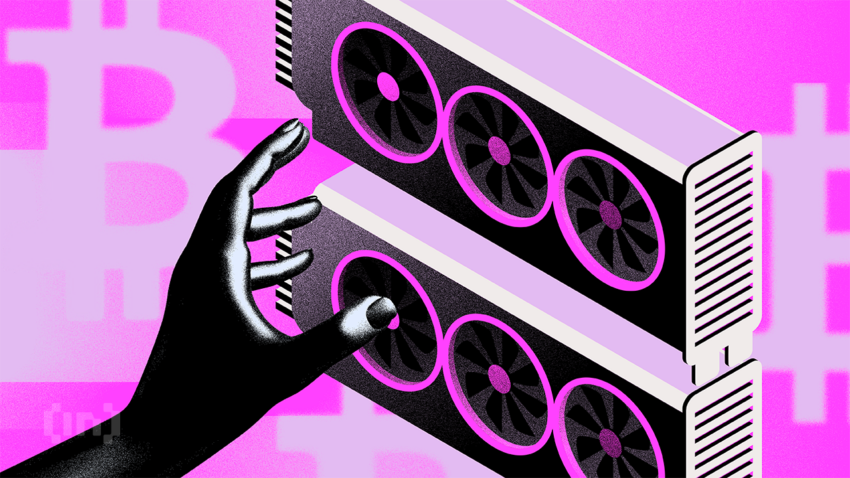When it comes to cryptocurrency mining, many believe it can only be done with a graphics card (GPU). While that used to be the case, due to the power behind such a device, there are other ways to get involved. One such way is CPU mining. In this guide, we’ll go over the basics of CPU-driven mining and describe how you can get involved.
What is CPU mining?

CPU mining is the process of using a computer’s central processing unit (CPU) to validate transactions on a blockchain and earn cryptocurrency rewards. Yes, it’s that simple!
Unlike GPU mining, which uses graphics cards, CPU mining utilizes the main processor of your computer. This method was more common in the early days of cryptocurrencies like Bitcoin but is now typically used for mining specific digital assets that are optimized for CPU mining. However, if you are wondering how to mine Bitcoin with CPU, that requires an entirely new discussion.
Let us understand it a tad differently!
As you may know, mining is the act of allocating computer power to solve complex algorithms. In doing so, a miner is validating a block of transactions and committing it to the blockchain ledger. They’re then rewarded in cryptocurrency for doing so.
Usually, this process is done via harnessing the power of a GPU, as mentioned. However, it’s also possible to mine with your CPU — but only for specific digital assets.
What to mine with a CPU?
While CPU mining is not as powerful as GPU mining, there are still cryptocurrencies that can be effectively mined using a CPU. These are generally less difficult to mine and can be a good starting point for beginners.
Top 5 CPU mining coins
Dogecoin (DOGE)
Dogecoin, with its growing popularity, is a project to keep an eye on for CPU mining. It’s less difficult to mine than Bitcoin or Ethereum. However, due to its popularity, you may face competition from users with more powerful mining setups.
Monero (XMR)
Monero is a popular privacy coin known for its resistance to ASIC miners, making it a favorable option for CPU mining. This means you’ll encounter less competition from specialized mining hardware.

Electroneum (ETN)
Electroneum offers the ability to process payments via a blockchain-based mobile app and is also ASIC-resistant. This reduces competition and makes it a viable option for CPU miners.
Bytecoin (BCN)
Bytecoin is one of the first cryptocurrencies that utilized the CryptoNote protocol, which is designed for CPU mining. It remains a good option for those looking to mine with a CPU.
Zcash (ZEC)
Zcash, a privacy-focused cryptocurrency, also supports CPU mining. It provides the opportunity to mine using your CPU due to its Equihash algorithm, which is less demanding than those of Bitcoin or Ethereum.
How does CPU mining work?
CPU mining works by using your computer’s processing power to solve complex mathematical problems, known as hashes. When a hash is solved, a new block is added to the blockchain, and the miner is rewarded with cryptocurrency. The effectiveness of CPU mining depends on the processing speed and number of cores of the CPU.
Maybe CPU only coins would be the future for mining!
Cedrick, Programmer: X
How to mine with CPU?
Interested in CPU mining? Here are the best ways to start:
Solo mining
You can mine by yourself, but this is not recommended. As mentioned, you have to be the first to solve a block’s algorithm to receive a reward. Solo mining puts you up against powerful machines, many of which will outperform your CPU.
Mining pool
A mining pool is one of the more popular ways to participate in both CPU and GPU mining. By joining a pool, you combine your processing power with other miners to increase the chances of solving a block. Rewards are then distributed among all participants based on their contribution. Examples of mining pools for CPU mining include Nanopool for various assets or MineXMR for Monero specifically.
Factors to consider
Aside from choosing one of the less difficult cryptocurrencies to CPU mine, there are a few factors to consider when deciding on a CPU itself:
- Cores: A higher number of cores enhances your mining experience. More cores allow for efficient multitasking, with an 8-core processor being a good starting point.
- Threads: Utilize threading with AMD or Intel CPUs to split core numbers further, increasing speed and smoothness. Typically, a processor can thread up to twice its core count, e.g., a 4-core processor can generate up to 8 threads.
- Speed: For effective mining, a high hashrate is crucial. Choose a CPU with a competitive frequency (measured in GHz) to increase your hashrate and stay ahead in mining.
- Overall performance: A CPU underperforming in cores, threads, or speed could lead to financial losses, as electricity costs might exceed mining profits. Invest in a robust CPU.
- Usage considerations: Avoid using laptops for mining, regardless of the processor quality. Laptops can’t handle the intensive heat and power draw of mining. Instead, use a desktop with an adequate power supply and the mentioned factors.
Do you need a good CPU?
Absolutely! If you’re considering CPU mining, investing in the best processor available is essential. We’ll break down what to look for in a quality CPU for mining. The right processor can significantly impact your mining efficiency, power consumption, and overall profitability. Key factors include processing speed, number of cores, and energy efficiency.
Why doesn’t CPU mining always work?
While you can certainly leverage processor mining in the DeFi realm, it won’t be profitable on networks that are more ‘difficult’ to mine. This means it could take a long time to potentially earn a reward, incurring significant electricity costs in the process.
However, as blockchain networks develop and block rewards become rarer, the difficulty increases as well. When bitcoin was new, it was entirely possible to mine with a CPU, for instance. That is no longer the case at all. You’ll need the dedicated power of a GPU to do so optimally.
Interestingly there are a few cryptocurrencies optimized to work with a CPU. The popular privacy coin, Monero, is one such token. That said, you’re not going to generate nearly as much as you would with a GPU.
Also, keep in mind that because of ASIC GPUs – essentially dedicated GPUs for mining – some cryptocurrencies are altering their hashing algorithm to favor CPU-specific mining instead. You can view a list of cryptocurrencies to mine on StormGain.
As mentioned, Monero is a very popular privacy coin. It’s better than most assets for CPU mining, as the project has a built-in resistance to ASIC miners. This means you’ll be up against much less competition when Monero mining when compared to other assets like bitcoin.
Should you mine crypto?
You’re now much more educated on the process of CPU-led mining. It’s certainly a viable option for anyone with a desktop, but it’s not necessarily the best way to go about it. This type of mining is certainly more geared toward miners on a budget, but only with the right cryptocurrency project.
< Previous In Series | Mining | Next In Series >
Frequently asked questions
How many cores do I need for CPU mining?
What is the difference between GPU and CPU mining?
Is CPU or GPU mining better?
What is an ASIC Miner?
How much RAM do I need for CPU mining?
How can I increase hash rate in CPU mining?
Which factors should you consider when choosing CPU for mining?
Are there any risks of CPU mining?
Which is the best coin to mine on CPU?
Is CPU mining better than GPU?
Is there anything worth CPU mining now?
Is CPU mining risky?
Disclaimer
In line with the Trust Project guidelines, the educational content on this website is offered in good faith and for general information purposes only. BeInCrypto prioritizes providing high-quality information, taking the time to research and create informative content for readers. While partners may reward the company with commissions for placements in articles, these commissions do not influence the unbiased, honest, and helpful content creation process. Any action taken by the reader based on this information is strictly at their own risk. Please note that our Terms and Conditions, Privacy Policy, and Disclaimers have been updated.




